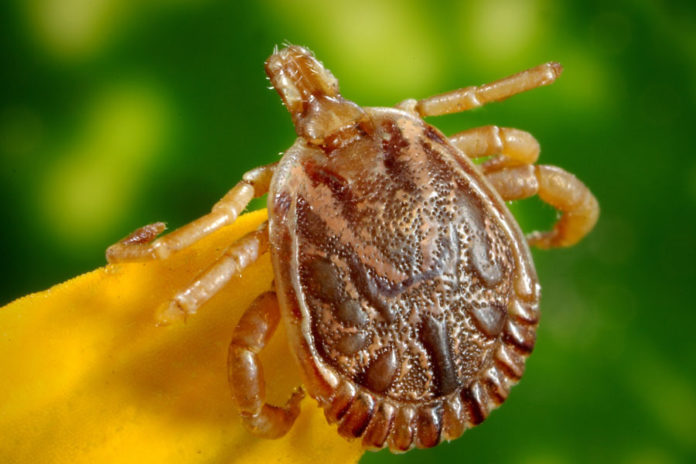As summer approaches and we spend more time outside, it is important to know about ticks because they can make us very sick. Ticks are tiny parasites that crawl but cannot jump or fly. They are around 3-5 millimeters in size and related to spiders. They are not invisible but can be hard to find. The most recent tick I removed was from behind someone’s ear. Hundreds of different ticks exist worldwide, and they all look a little bit different. Not all ticks cause illnesses, but the bad ones are dangerous enough that all tick bites should be taken very seriously.
Let’s start from the basics. Ticks are parasites, which means they need a host to survive, and feed on the host’s blood. They usually attach to medium and large size animals like deer, horses, and even dogs. When they stick to the body, the tick can both pass on and pick up new bacteria and other microbes, which can eventually be transmitted to humans.
Tick – related illnesses include Lyme disease, Rocky Mountain Spotted Fever, Babesiosis, and Ehrlichiosis to name a few. They can, at times, be difficult to diagnose, because the symptoms can be confused for so many other conditions. Flu-like symptoms, unexplained muscle and joint pains, or chronic fatigue can come and go for years. Blood testing is sometimes needed if symptoms are vague or inconsistent. The most serious problems can include facial paralysis, heart block requiring a pacemaker, or even death.



Lyme disease is the most well-known disease associated to ticks. It was first discovered in Lyme, a town in Connecticut, after a group of people there developed the illness. The first symptoms usually happen after the tick is no longer attached to the body, which is why it is so important to identify characteristic rashes associated with tick-associated illnesses. Erythema Migrans is the easiest way to diagnose Lyme disease, with its characteristic bulls-eye appearance. Elena Delle Donne, one of the greatest WNBA players in history, has shared a very public battle with chronic Lyme disease over the past almost 15 years.

Rocky Mountain Spotted Fever is the most common tick-borne disease in Mexico and despite its name is found more commonly in the Southeast United States. Petechiae is another skin condition that has been associated with ticks. These are red dots that appear on the skin, and can appear anywhere on the body, but for a disease like Rocky Mountain Spotted Fever, the rash classically starts on the wrists, ankle, and forearms, and spreads to the rest of the body.


If you see a tick, take these steps to remove it immediately. Use clean, fine-tipped tweezers and pinch the head of the tick as close to the skin as possible, but without pinching yourself! With slow, steady pressure, pull the tick off the skin. No need to twist or squeeze too hard Gently wash the area with soap and water. Call your doctor, go to a local clinic or urgent care, or schedule an immediate telemedicine visit to discuss treatment options. But do not delay! If you do not have symptoms, you may still be offered an antibiotic to help prevent infection from the tick bite.
Jose Torradas, MD Medical Director Unidos Contra COVID.
























